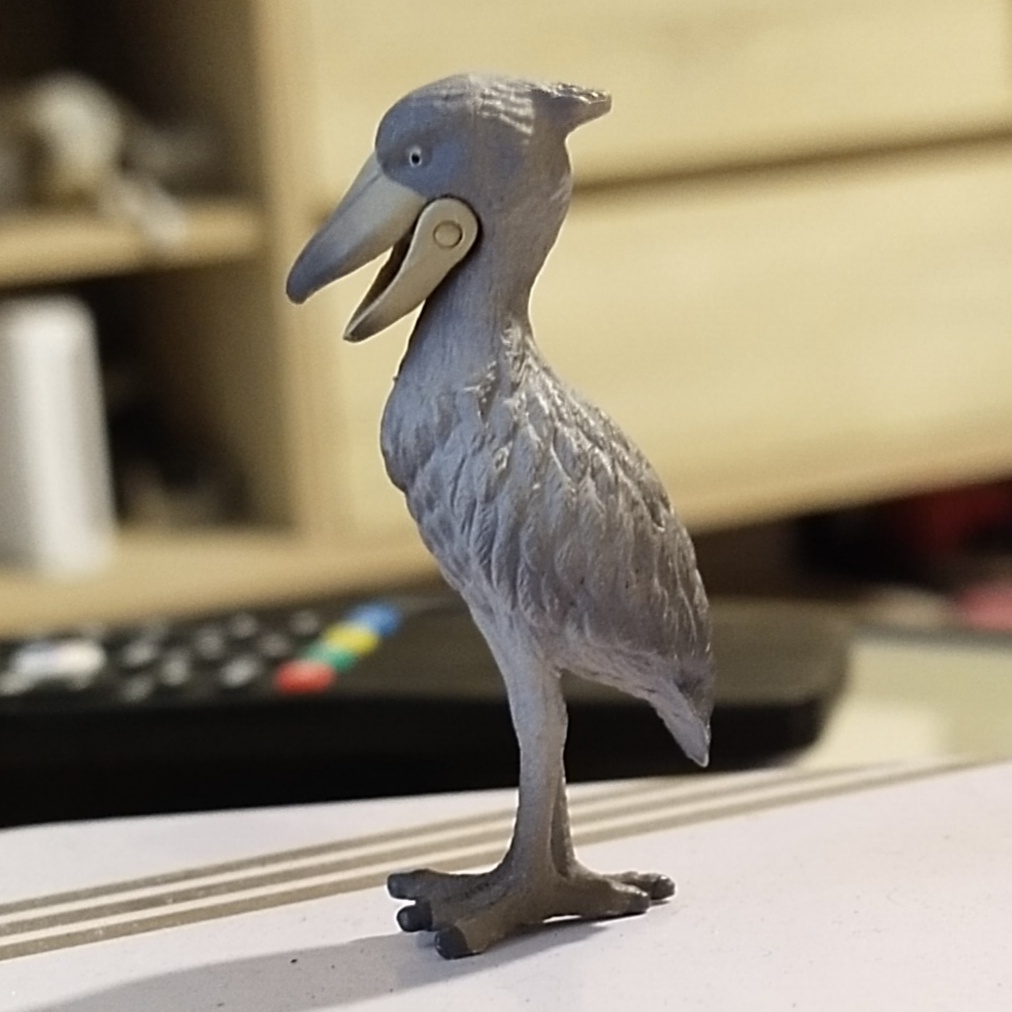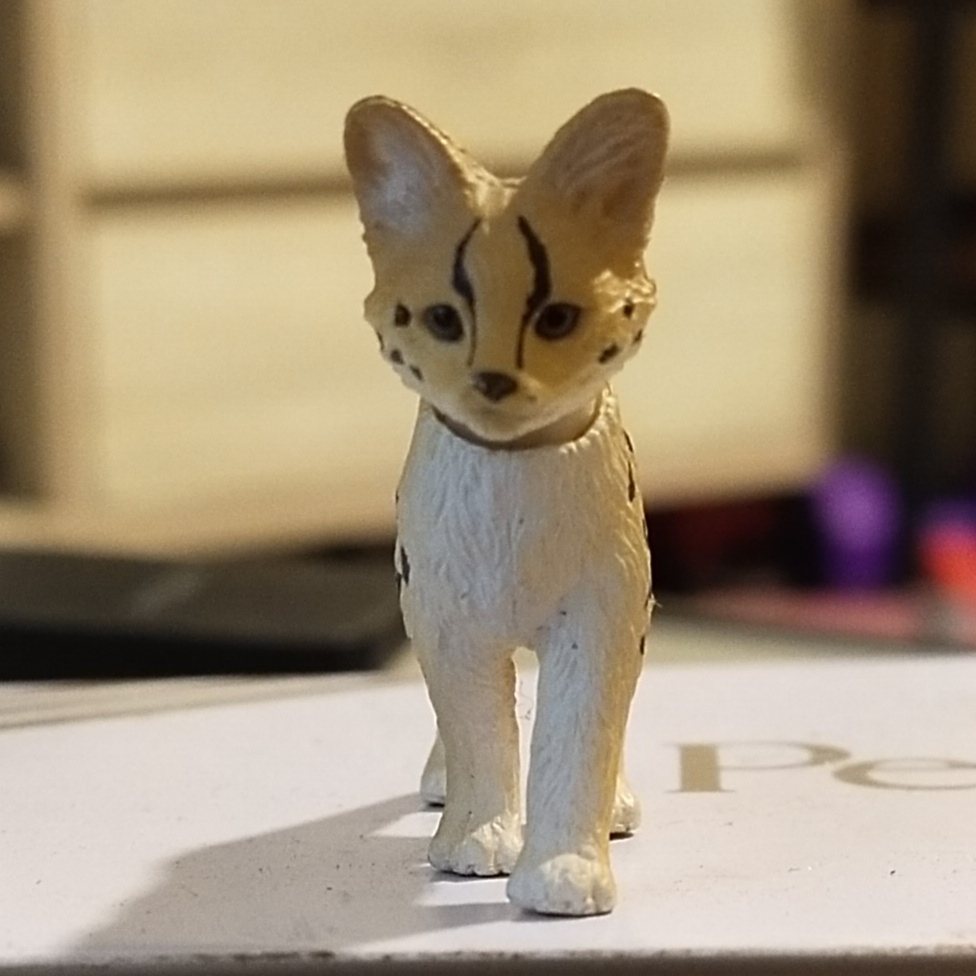Review and images by JimoAi; edited by bmathison1972
ANIA is a line of animal figures released under Takara Tomy A.R.T.S. catered towards educating children about wildlife. These figures are highly detailed, inexpensive, and often accurate to the animals they are made to portray. The line has gained popularity in Japan, with them branching out to releasing bath bombs with little animals, gashapons, and blind boxes. For the subject of this review, I will be going to review one in the blind box series. For starters, the Takara Tomy ANIA blind box series contains 8 figures in one series, of which one of them will be a secret. They are mostly sold as a whole case with 8 smaller boxes containing 1 of each figure and they are usually rather inexpensive compared to something like anime figures or movie-based franchises. If I remember correctly, the whole box cost me about 30 USD, or in the case for my location, 40 SGD.
About the series: the Takara Tomy ANIA blind box series currently has 2 themes: beetles or baby animals. The first 3 series are focused on baby animals, though there is no theme in the species selections. Although the third (today’s) series contains mostly adult animals (and seem like a very odd selection), the selection is actually based on the anthropomorphic animal characters in the popular anime ‘Kemono Friends’. Without further ado, we will take a look at each figure, according to the sequence they were introduced in the anime.

First up, Southern Tamandua (Tamandua tetradactyla)
- Where found: South America, from forests to savannas
- Size of figure: 3.6cm tall. Tail length: 2cm. Shoulder height: 3.5cm
- Size of actual animal: body length: 34 to 88cm. Tail length: 37 to 67cm. Shoulder height:60 cm
- Scale: about 1:17
- Colour: Black eye, off white body with a black mid body and white tail tip
- Diet: Omnivore
- Articulation: tail rotation
- Species frequency of being made: rare
Additional notes: Also known as the lesser anteater, there are 4 known subspecies of southern tamandua; I am not the most well informed person on terrestrial mammals, but I think this is based on T. t. tetradactyla as that is the species that the character in the anime is based on. The figure is posed in the iconic rearing stance and there seems to really accurate and well done except the tail seems to be a little too short, claws should be painted grey instead of sloppily painted black and with all the figures, a very noticeable ball joint. Kaiyodo has one with a longer tail in proportion for their Capsule Q Unique Animals Zoo line.


Black-tailed Prairie Dog (Cynomys ludovicianus)
- Where found: grasslands in North America
- Size of figure: height when standing up: 3.3 cm . Tail length: 1.3 cm
- Size of animal: varies thought species
- Scale: varies
- Colour: golden brown with white underbelly
- Diet: Herbivore (does practice cannibalism)
- Articulation: head rotation
- Species frequency of being made: uncommon as a genus
Additional notes: Prairie dogs are not dogs despite their name; they are a type of rodent. I am unsure of which prairie dog species is this supposed to be due to my limited knowledge on land mammals. However, in the anime, the prairie dog is a black-tailed prairie dog, although this figure lacks a black tip at the end of the tail.


Shoebill (Balaeniceps rex, juvenile)
- Where found: Swamps and wetlands in West Africa
- Size of figure: 4.6 cm tall
- Size of animal: 110 cm to 150 cm tall and 100 to 140 cm long from beak to tail
- Scale: varies (juvenile)
- Colour: grey body and feathers, yellowish beak and
- Diet: aquatic animals including fish like lungfish and catfish, frogs, reptiles, including small Nile monitors, juvenile crocodiles, and (rarely) turtles, and other birds
- Articulation: jaw articulation
- Species frequency of being made: uncommon
Additional notes: This figure has the trademark ‘death stare’ of a shoebill stork. The figure is mostly accurate, except for the oversized feet, which is a problem plaguing many theropod figures alike and the head to body ratio looks too small, making it look like a ‘chibi’ or a juvenile.



Royal Penguin (Eudyptes schlegeli)
- Where found: Macquarie Island
- Size of figure: 3.5 cm tall
- Size of animal: 65 to 76 cm tall
- Scale: 1:18 to 1:20.5 scale
- Colour: black dorsal region with white underbelly, yellow crests and pink feet
- Diet: fish, small crustaceans, and squid
- Articulation: wing rotation
- Species frequency of being made: very rare
Additional notes: Prior to this figure, the only figure of this species was by Kaiyodo for their Penguin’s Lunch collection. With the introduction of this figure, it gives collectors a cheaper and easier alternative to a royal penguin figure, as the Kaiyodo one is quite rare. The wing articulation is not as distracting as the articulation of the heads and tails of the mammals.


Gentoo Penguin (Pygoscelis papua)
- Where found: Antarctica and surrounding islands
- Size of figure: 3.6 cm tall
- Size of animal: 51 to 90 cm
- Scale: about 1:14 to 1:25
- Colour: black dorsal region with a white underbelly, white marking around the eyes and yellow feet with black soles
- Diet: Fish, crustaceans, and squid
- Articulation: wing rotation
- Species frequency of being made: uncommon
Additional notes: This penguin has been made by CollectA, Mojö Fun, and by several Japanese companies. They are the third largest penguin, only



Common Raccoon (Procyon lotor)
- Where found: North America, introduced to parts of Europe and Japan
- Size of figure: body length: 4.2 cm. Tail length: 2.1 cm. Total length: 6.3 cm
- Size of animal: Body length: 40 to 70 cm. Tail length: 20 to 40 cm.
- Scale: Varies, but about 1:17.5
- Colour: Darker grey dorsal region with a lighter grey underbelly, dark grey markings on eyes, nose and tail
- Diet: omnivorous
- Articulation: head rotation
- Species frequency of being made: very common
Additional notes: Probably the least exciting figure in the set, due to how many figures of this species has been made, but it’s still a good figure. It is sculpted with it’s tongue sticking out, which adds a bit of character. They are making the most variable-sized mammals due to their size being dependent on where the individual raccoon is inhabiting.


Fennec Fox (Vulpes zerda)
- Where found: in the Sahara Desert, from Morocco and Mauritania to northern Niger, through Egypt and the Sinai Peninsula
- Size of figure: body length: 3.4 cm. Tail length: 2 cm
- Size of animal: body length: 34.5 to 39.5 cm. Tail length: 23 to 25 cm
- Scale: about 1:12.5
- Colour: sandy brown dorsal region with white underbelly, pink ear interior
- Diet: lizards, insects, birds and their eggs, roots, and fruits
- Articulation: head rotation
- Species frequency of being made: uncommon
Additional notes: The 4 major companies: CollectA, Schleich, Papo, and Safari Ltd have their own versions of the smallest canine species, but this fennec fox has the better size. They are famously known for their small size and large ears, and the eyes on this figure are better done as compared to the cartoony 2021 Schleich version and Papo’s cat-eyed rendition.


Serval (Leptailurus serval, juvenile) (chase figure)
- Where found: Africa, especially sub-Saharan countries that are not rainforested, and rare in North Africa
- Size of figure: Body length: 3.7 cm. Tail length: 1.1 cm
- Size of animal: body length: 62 to 100 cm. Tail length: 30 cm
- Scale: varies (juvenile animal)
- Colour: Orange brown dorsal region with white underbelly with black spots around the body and black bands on the tail
- Diet: rodents, birds, reptiles, frogs, and insects
- Articulation: head rotation
- Species frequency of being made: rare
Additional notes: The mascot and main character of the Kemono Friends, it’s no surprise that they will make one for this line. These cats are medium-sized predators that are often overshadowed by the larger cats like lions and leopards. They have the longest legs-to-body ratio of any cat, and they are known to jump up to 2 metres to catch prey, which I have seen in person. I think this was a unique baby animal before Epoch made a line focusing on baby servals, though the adults have been made by Colorata, multiple times by Kaiyodo, and recently by Safari Ltd.



Final thoughts: I think this is a very exotic line with a wonderful assortment of both frequently made and rarely made species that appeals to both figure collectors and fans of the Kemono Friends franchise. This set probably sold like hot cakes in Japan due to the popularity of the franchise at that time. This is my favourite of the Takara Tomy ANIA blind box sets so far, and I really hope they make a set for small reptiles and fish in the future. This set is likely retired but it can be found on eBay or other secondhand sites like Yahoo Auctions.
Disclaimer: links to Ebay and Amazon on the AnimalToyBlog are affiliate links, so we make a small commission if you use them. Thanks for supporting us!



